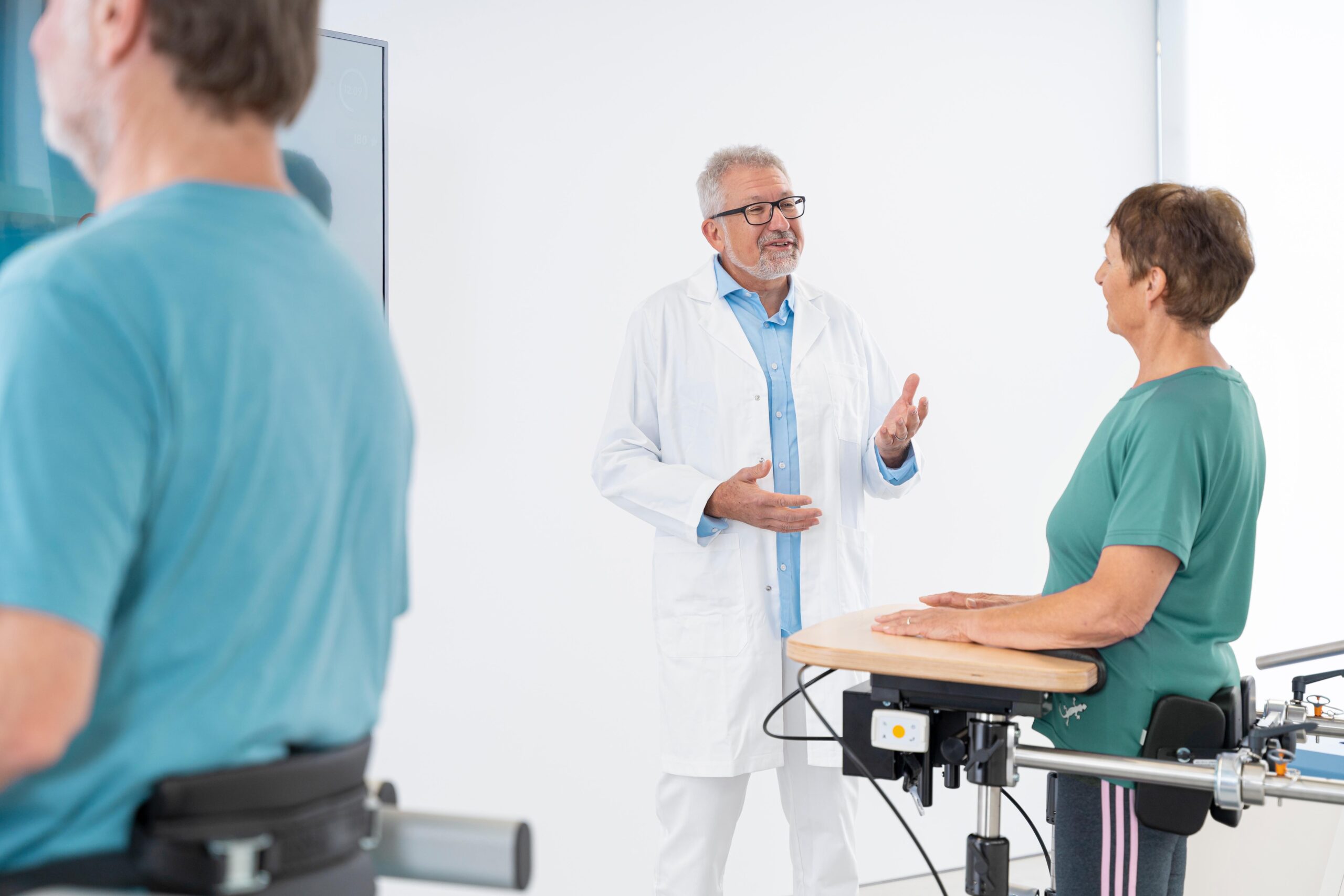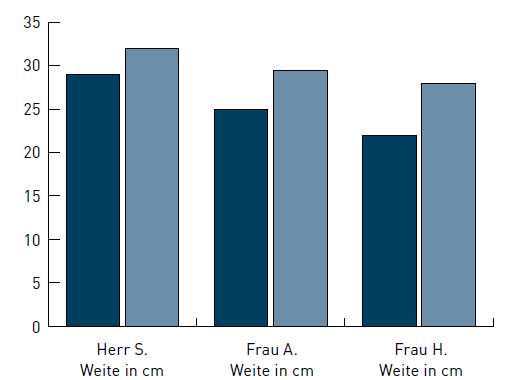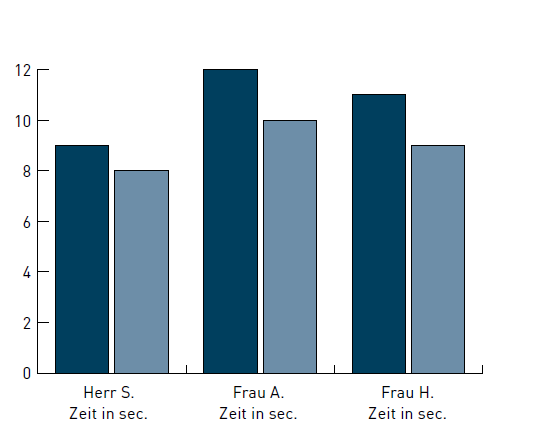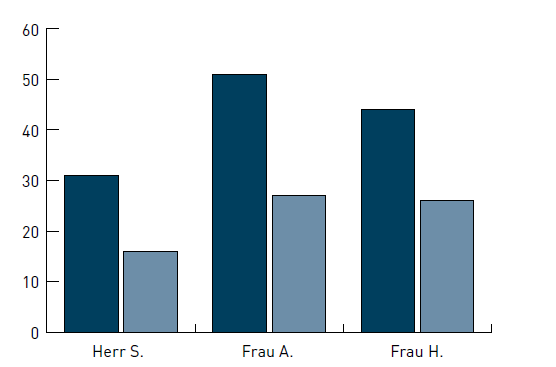
THERAPY-Magazin
Equipment-based balance training after knee TEP surgery: Influence on functional activity

Anis Hamila
Physiotherapeut
Although the number of knee TEP operations has increased in recent years, there are still many unanswered questions regarding postoperative physiotherapeutic rehabilitation. This is a controversial topic. The effect of proprioceptive training in particular is still under-explored.
Objective
This case study investigates the question of whether equipment-based, proprioceptive balance training after knee TEP surgery is effective in terms of functional activity in addition to conventional physiotherapeutic measures. The question therefore is whether the test persons’ ability to balance improves, mobility increases and fall-related self-efficacy increases after balance training.
This case study investigates the question of whether equipment-based, proprioceptive balance training after knee TEP surgery is effective in terms of functional activity in addition to conventional physiotherapeutic measures. The question therefore is whether the test persons’ ability to balance improves, mobility increases and fall-related self-efficacy increases after balance training.
Methodology
Three patients were included in the analysis. The participants had all received a knee TEP implantation within the last 14 days. During their three-week rehabilitation period they received physiotherapy twice a week as standard. In addition, they trained on the THERA-Trainer coro once in the first week and three times each in the following two weeks. Before and after the intervention period, assessments were carried out with the participants in order to record the changes on a functional level. The assessments included the Functional Reach Test, the Timed Up and Go Test and the Falls Efficacy Scale – International Version.
Three patients were included in the analysis. The participants had all received a knee TEP implantation within the last 14 days. During their three-week rehabilitation period they received physiotherapy twice a week as standard. In addition, they trained on the THERA-Trainer coro once in the first week and three times each in the following two weeks. Before and after the intervention period, assessments were carried out with the participants in order to record the changes on a functional level. The assessments included the Functional Reach Test, the Timed Up and Go Test and the Falls Efficacy Scale – International Version.

Fig. 1: Functional Reach Test

Fig. 2: Timed Up and Go Test

Abb. 3: Falls Efficacy Scale – International Version
Results
All test persons showed an improvement in the areas of balance ability, mobility and fall-related self-efficacy after the equipment-based balance training with the THERA-Trainer coro. Only in the balance tests with closed eyes was no improvement found. The training can also be described as safe and harmless, as no complications have arisen during the performance. The exact results are shown in the following tables:
All test persons showed an improvement in the areas of balance ability, mobility and fall-related self-efficacy after the equipment-based balance training with the THERA-Trainer coro. Only in the balance tests with closed eyes was no improvement found. The training can also be described as safe and harmless, as no complications have arisen during the performance. The exact results are shown in the following tables:
Discussion
The standardised use of the equipment-based balance training can be implemented as an effective additional training method. Therapists thus succeed in maintaining and even improving proprioception and functional activity. However, in order to be able to make an evidence-based statement on the effect of proprioceptive equipment-based balance training, further larger studies are required.
The standardised use of the equipment-based balance training can be implemented as an effective additional training method. Therapists thus succeed in maintaining and even improving proprioception and functional activity. However, in order to be able to make an evidence-based statement on the effect of proprioceptive equipment-based balance training, further larger studies are required.
Ambulante Rehabilitation
balo
coro
Fachkreise
Produkte
Science
senso
Standing & Balancing
Stationäre Rehabilitation
THERAPY 2020-I
THERAPY Magazine
verto
Wohnen im Alter & Langzeitpflege

Anis Hamila
Physiotherapeut
Anis Hamila is a certified physiotherapist who studied at the 'Ecole supérieure des sciences et techniques de la santé de Monastir' in Monastir, Tunisia. In 2010, Anis Hamila began a Master's program with a focus on Movement and Sports Gerontology at the German Sport University in Cologne, where he supported numerous research projects as a research assistant at the institute. As part of his Master's thesis, he focused intensively on the feasibility and effectiveness of dynamic standing training using equipment for stroke patients and conducted a longitudinal study with home-dwelling stroke patients as part of his final thesis
References:
Related contents
Find related exciting contents in our media library.
This is not what you are searching for? Knowledge
Meet our specialists.
Are you interested in our solutions? Schedule a meeting with a Consultant to talk through your strategy and understand how TEHRA-Trainer can help you to advance rehabilitation.
You need to load content from reCAPTCHA to submit the form. Please note that doing so will share data with third-party providers.
More InformationYou are currently viewing a placeholder content from Turnstile. To access the actual content, click the button below. Please note that doing so will share data with third-party providers.
More Information